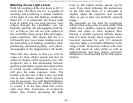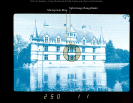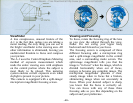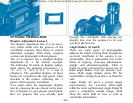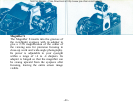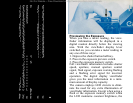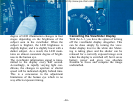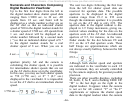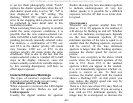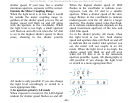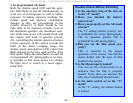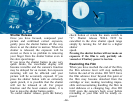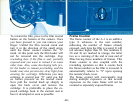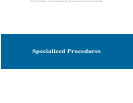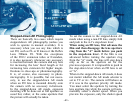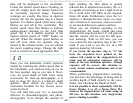is set for flash photography while “buLb”
replaces the shutter speed data when the AT
dial shutter speed scale is set to “B”. “M” is
also displayed at the “B” setting. The
flashing “EEEE EE” appears to warn of
error in the stopping-down process and will
be explained in more detail later in this
instruction booklet.
When switching from one priority to another
under the same exposure conditions, it is
possible that the new camera-selected var-
iable will differ a half step from the corres-
ponding previously manually-selected value.
For instance, a combination of 1/250 sec.
and f/5.6 in the shutter priority AE mode
may become 1/180 sec. at f/5.6 in the
aperture priority AE mode under the same
conditions. This is due to the fact that the
camera-selected value is rounded off to half
steps in the display. However, since the
camera actually controls its variable stepless-
ly, this seeming discrepancy will have no
effect upon exposure.
Incorrect Exposure Warnings
The types of incorrect exposure warnings
depend on what AE mode you are using.
1. In shutter priority AE mode
When exposure is incorrect, the LED digital
readout for aperture flashes on and off.
Underexposure
Usually the digital readout for aperture
flashes showing the lens maximum aperture
to indicate underexposure. At very low
shutter speeds, it is possible for a different
exposure, turn the AT dial to as lower shut-
ter speed.
Overexposure
Whenever any aperture smaller than f/16
(that is, 19 to 32) appears in the readout, it
will always be flashing on and off. Whether
or not this indicates overexposure depends
on the lens minimum aperture. If the
minimum aperture of the lens is equal to or
smaller than the flashing aperture, exposure
will be correct. If the lens minimum
aperture is larger than the flashing aperture,
increase the shutter speed for correct ex-
posure.
There is one exception to the above which
occurs when the minimum aperture of the
lens is f/32. Since f/32 is the smallest
aperture which can appear in the readout,
it is not immediately apparent whether ex-
posure is correct or not. To find out,
increase the shutter speed until the readout
shows a flashing f/22. At that point, you
may reduce the shutter speed one step for
correct exposure at f/32.
There is a rare case where f/16 may flash on
and off in the viewfinder. If you are using a
lens with an f/16 minimum aperture, the
image may be overexposed, so increase the
Not For Resale – Free Download at http://www.joe-chan.com/manuals
–
55
–



